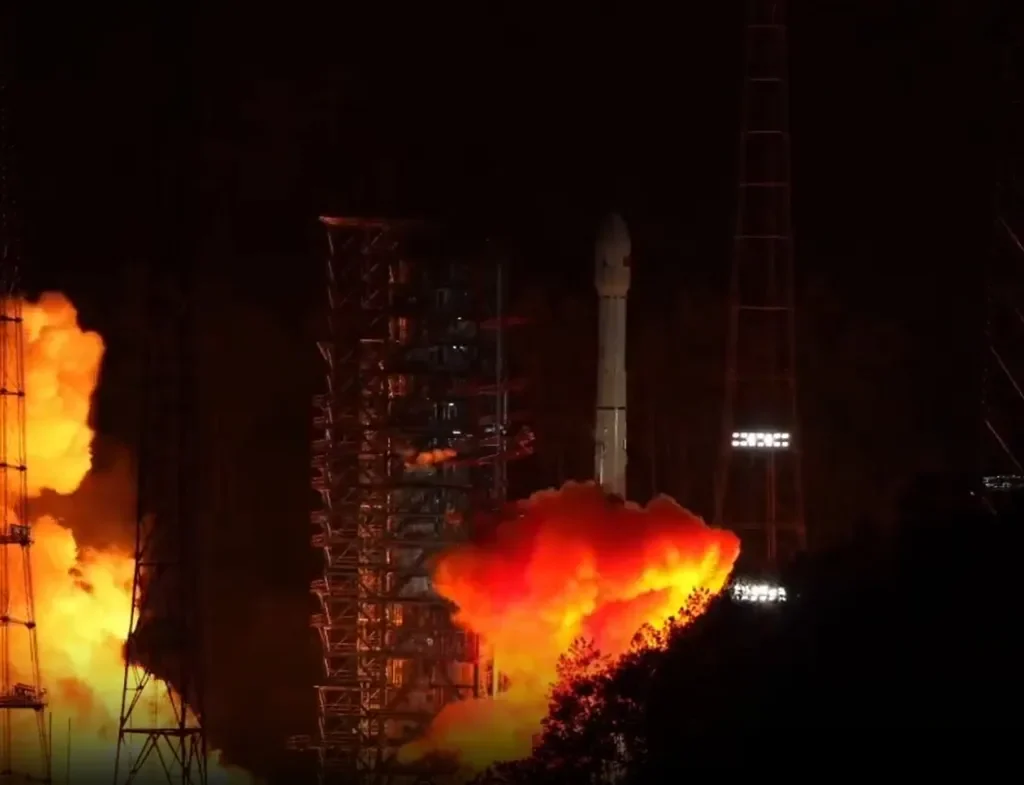China launched its second planetary exploration mission last week, sending the Tianwen-2 spacecraft to collect samples from a near-Earth asteroid and later study a main belt comet, as Beijing expands its role in international deep-space science and planetary defense efforts.
The mission lifted off on a Long March 3B rocket from the Xichang Satellite Launch Center at 1:31 p.m. Eastern time (1731 GMT) on May 29, according to the China Aerospace Science and Technology Corporation (CASC). Tianwen-2 is now in a transfer orbit en route to near-Earth asteroid 469219 Kamoʻoalewa (2016 HO3), where it is expected to arrive in mid-2026.
Tianwen-2 will spend roughly seven months studying the asteroid, collecting up to one kilogram of samples, which are expected to return to Earth in 2027. The spacecraft will then continue on to comet 311P/PANSTARRS for a rendezvous around 2035, using an Earth gravity assist for a six-year interplanetary journey.
“These bodies have extremely weak and irregular gravity fields,” said Franco Perez-Lissi, a mission systems engineer for ESA's Ramses project, in an interview with SpaceNews. “So we cannot rely on traditional orbiting like we do around planets. Landing, or even just flying close, requires extreme precision, greater autonomy and careful planning.”
Tianwen-2 is China's first sample-return mission targeting a small solar system body and marks a step forward in developing complex spacecraft navigation, sampling, and long-duration mission capabilities. The mission will test up to three sample acquisition methods, including hover sampling with a robotic arm, a touch-and-go technique, and a drill-assisted anchoring system.
The probe carries 11 science payloads, including high-resolution imaging systems, spectrometers, and dust and gas analyzers to investigate the geology, composition, and activity of both target bodies. The scientific objectives include probing the asteroid's potential lunar origin, understanding the structure of transitional cometary objects, and analyzing material that may contain organic compounds.
Tianwen-2 follows the 2020 launch of Tianwen-1, which delivered a rover to Mars. Future missions in the Tianwen series include a Mars sample return mission (Tianwen-3) and an exploration of the Jupiter system (Tianwen-4), with broader goals tied to China's long-term astrobiology and planetary science strategy.
“There's always value in more countries participating in asteroid and comet exploration,” Perez-Lissi said. “It helps planetary defense, expands science, and gives us greater insight into our origins.”
